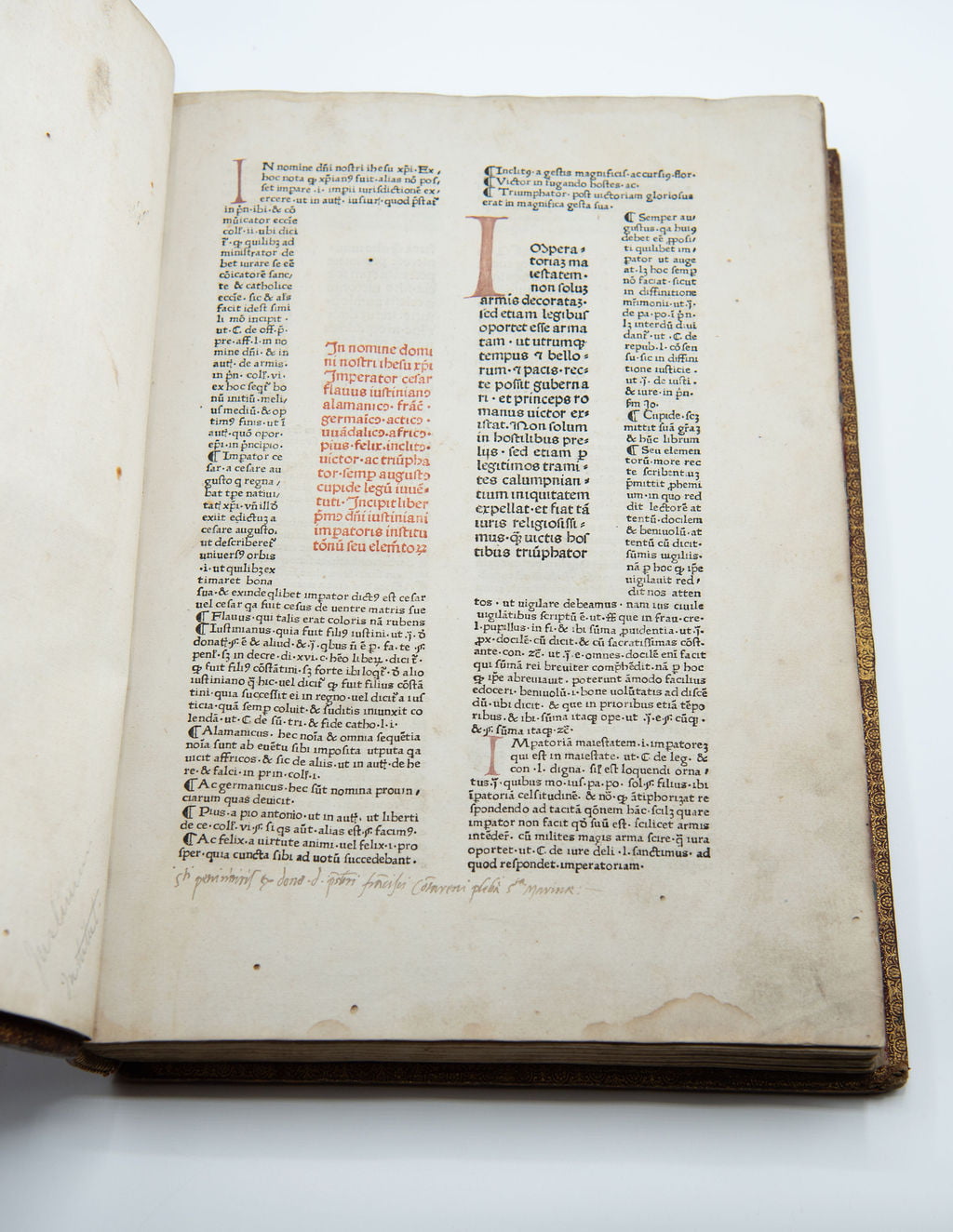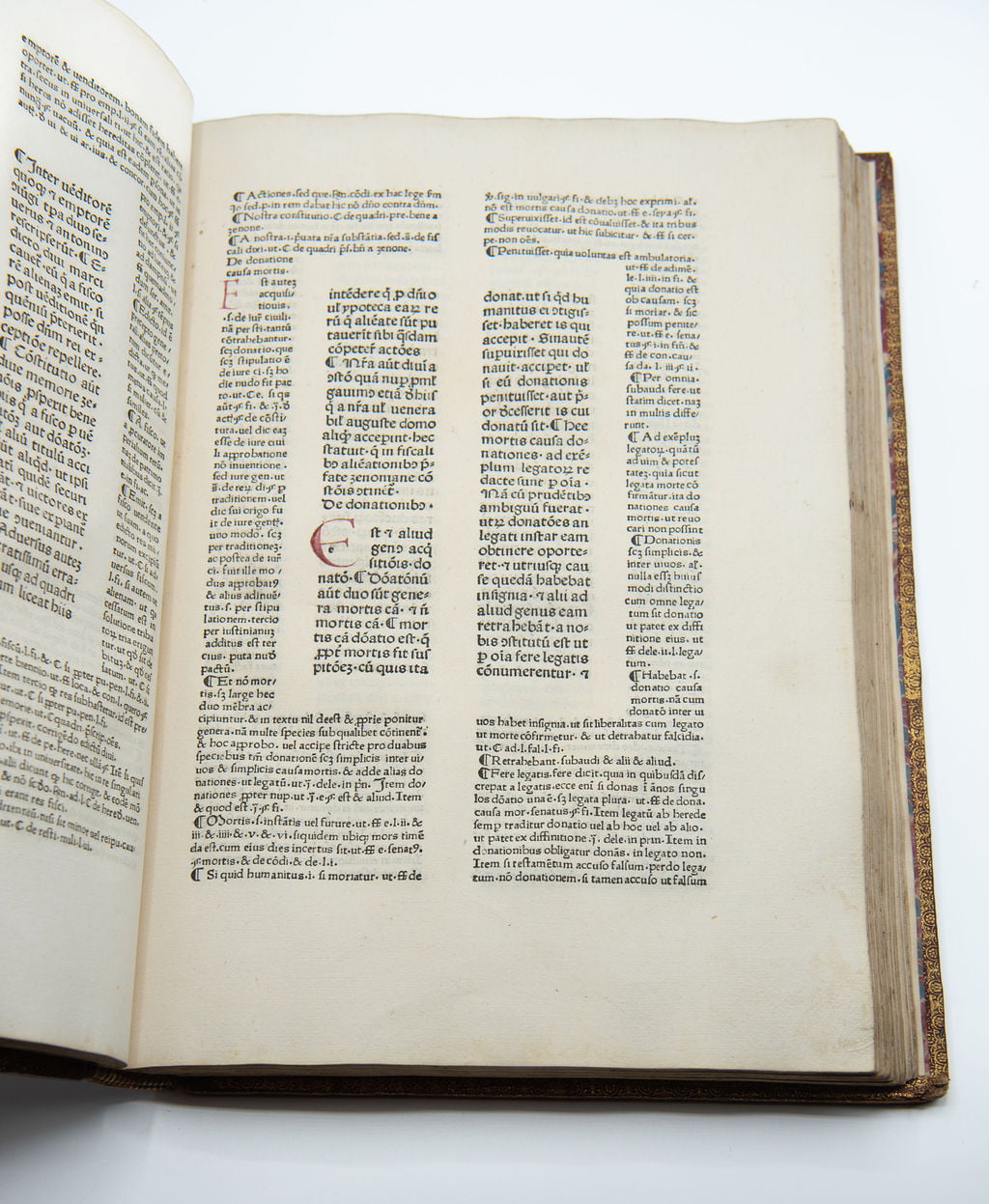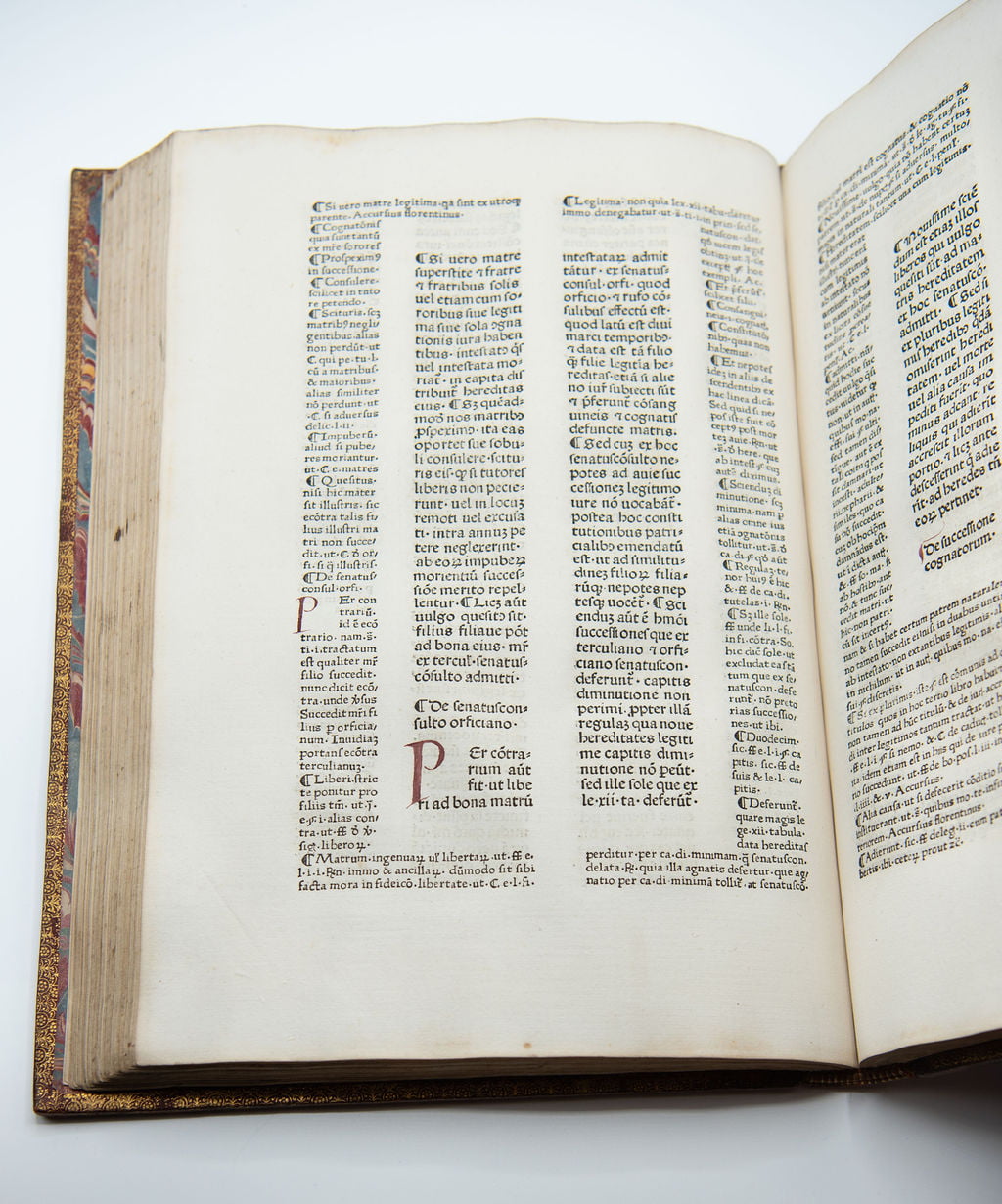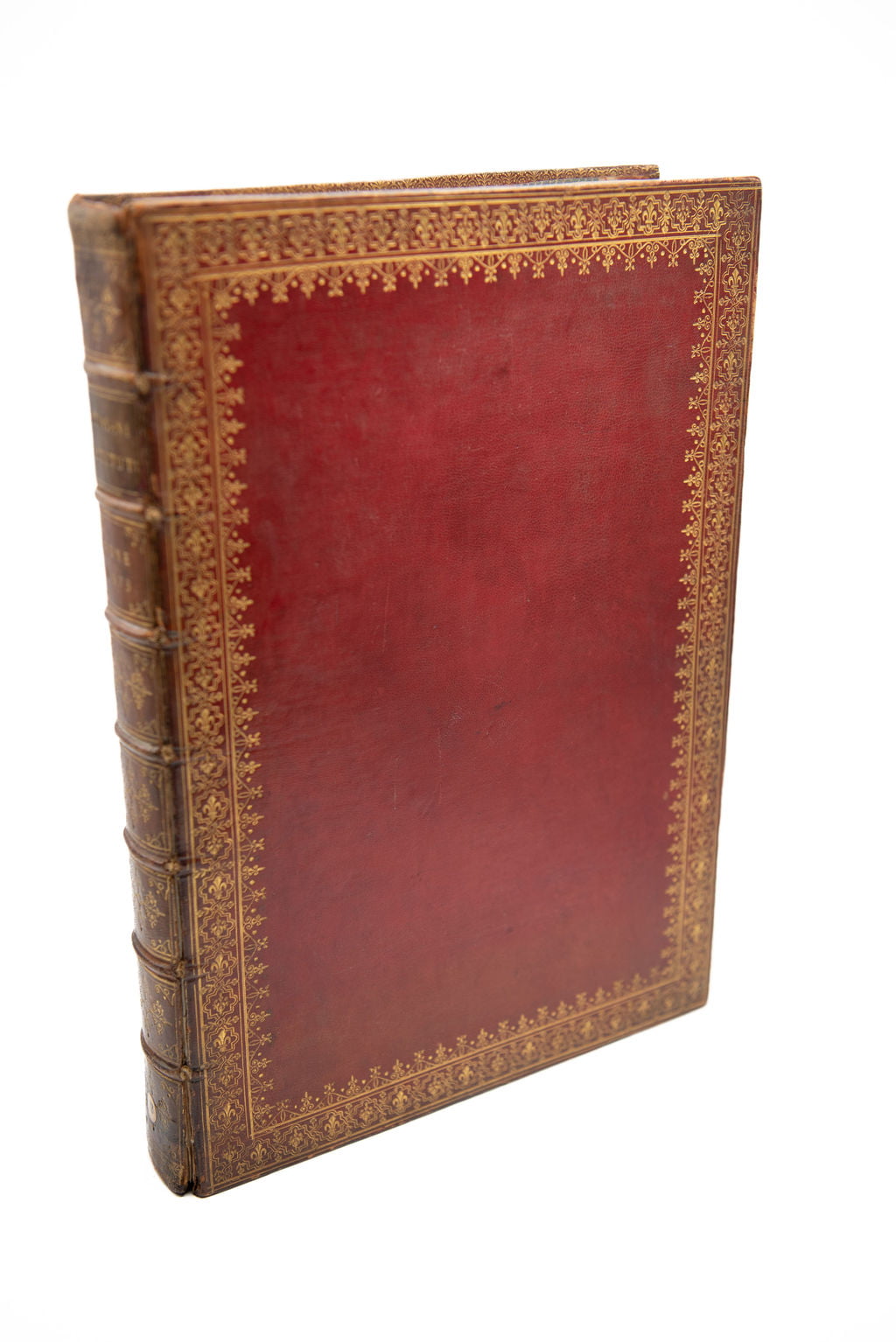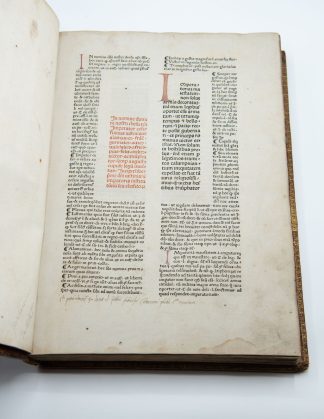JUSTINIAN
NO RECORDED COPY IN USA
Institutiones
Rome, Ulrich Han and Simon Chandella de Lucca, 1473, 10th April£59,500.00
Large folio. 174 ll. unnumbered and unsigned [a-h¹ i6 k-r¹ s ], final blank precedes the register. Double column, Gothic letter, surrounded by commentary in Roman (typically 58 lines per page), text to first leaf in red and black, initial letters in red ink throughout most of text. Very minor wormholes to some lower margins, little water stain to a few edges, a very good, clean, virtually uncut copy on thick paper, 16th century ms ex dono of Francisco Contareni of Santa Marina, Venice, at foot of first leaf, 19th century bookplates of Sir Edward Sullivan and William O’Brien on pastedown, Sunderland shelf mark on ffep. In a very handsome and typical ‘Sunderland’ binding c.1700 of red morocco, ornate outer border gilt of alternating fleur de lys and flowers, edges and inner border gilt to floral design, spine gilt in eight compartments decorated with leaves and tendrils, morocco labels, small case mark on paper at foot. Upper joint cracked, one corner worn, very grand in the English aristocratic taste.
A very early edition (probably the 5th) of the single most important law book of the western world. The first edition was published by Schoeffer in Mainz in 1468 and is conspicuously rare. This and the present edition share the Glossa Ordinaria of Accursius.
“No single authority has had greater influence in shaping the existing legal codes of all nations than the Roman Law; obvious in those which, like the Code Napoleon, sought to impose a theoretic standpoint, it may be felt even in fundamentally empiric bodies of law like the English Common Law. The credit for the survival of this authority can be ascribed in a very large degree to work undertaken by Justinian I, Roman Emperor of the East from 527 to 565.” PMM p.3
Soon after his accession, Justinian ordered the codification of the entire chaotic body of existing law, which was completed in 533.
“…the Emperor directed Tribonian to prepare an introduction to the main work, and the elementary treatise thus produced, the ‘Institutes of Justinian’, has been for students ever since the introduction to the Roman law. … When people speak of the Roman law today, what they mean is Justinian.” PMM p.3
A very distinguished provenance. The ms ex dono (second quarter of C16th) records the gift of the volume by Francisco Contareni to the Church of St Peter Martyr in Venice. Contareni is a variant of ‘Contarini’, one of the greatest families of Venice, producer of senators, admirals, Patriarchs, and even Doges. Francisco describes himself as ‘of Santa Marina’, where the family had a palace, and an inscription is recorded of him in the Church of Santa Marina, now destroyed ,(Delle Inscrizioni Venezione I. p.339) which also received half his estate under his will; Francisco died in 1545.
“The great library of Charles Spencer, Third Earl of Sunderland (1674-1722) contained only a few manuscripts and some 20,000 printed books; it was particularly strong in incunabula (many being printed on vellum)”. Seymour de Ricci p.38. Sunderland purchased extensively through an agent, James Gibson, who travelled all over Italy, buying speculatively, especially from monastic collections, but always giving Sunderland first choice. The Sunderland Library, described in 1703 as the finest in Europe, was sold by the Duke of Marlborough in 1882 for over £56,500, a princely sum. This volume, lot 6619 “A Rare and Finely Printed Edition’ fetched £6-10s.
ISTC ij00509300, IGI 5490; BMC IV 23 (imperfect); HCR 9493 ; GKW 7584; Not in Goff. Only five other copies recorded; 1 in England, 3 in Italy, and 1 in Switzerland. Printing and the Mind of Man 4 (1st end). See Katherine Swift, Bibliotheca Sunderlandiana. Bibliophily, 1986, 2, pages 63-90.In stock


